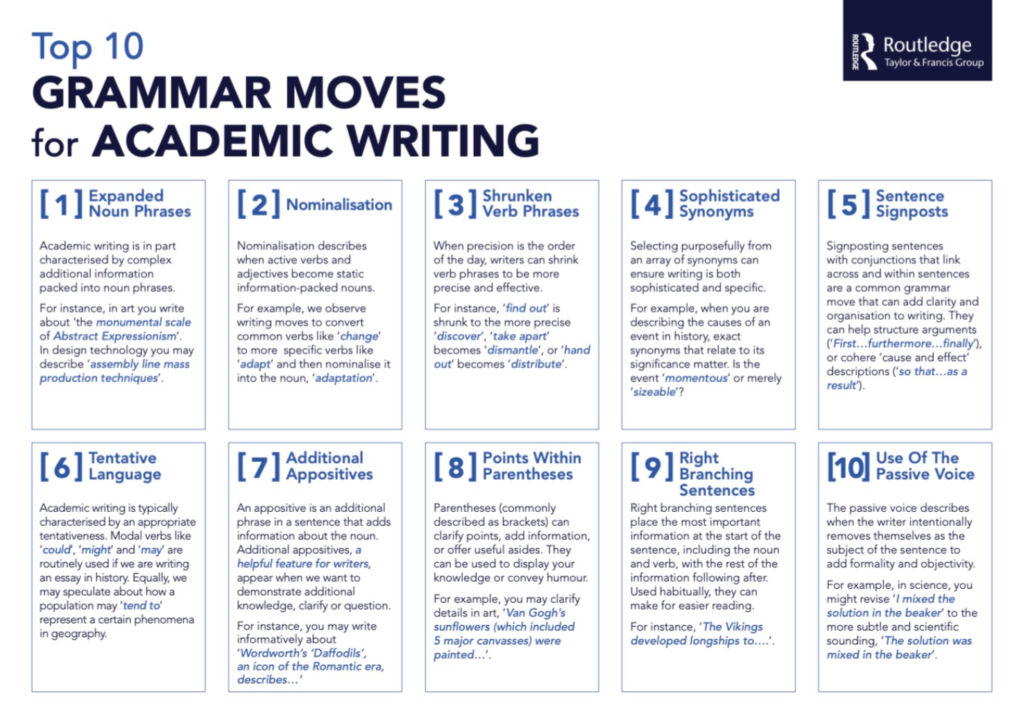There are few topics in education – indeed, English life – that inspire fear, loathing and unfulfilled expectations quite like the subject of grammar.
Researchers are quick to challenge notions of ‘standard English’ and how grammar is being taught in primary school, or the tyranny of tests. Sadly, amidst these loud debates, too many teachers muddle along quietly and with little confidence about how to teach grammar to improve pupils’ writing.
My own ‘grammar gap’ began in school and extended to my teacher training (being trained to teach the English language no less). The harsh baptism of teaching A level English meant that I had to teach myself grammar. I was spectacularly undertrained to support struggling writers. What chance a busy religious education teacher largely untrained in the many ‘moves’ of academic writing?
Almost universally, teachers lack confidence in teaching grammar and explaining the effects of grammatical choices. With a little support, we could improve annotations in art, essays in history, arguments in RE, experiment write-ups in science, and much more. Even when teachers have a good knowledge of grammar, they can lack confidence in teaching it. It is a frustrating tale of innumerable missed opportunities.
We are left asking: are teachers in both primary and secondary schools suffering from a crippling lack of confidence when it comes to teaching grammar?
A very short history of grammar teaching
Criticisms attending grammar teaching come from all angles. The more formal teaching of grammar has its roots in early grammar schools, centuries ago. At regular intervals since, grammar teaching has been routinely criticised as an ineffectual ‘confining cage’ that produces ‘square cucumbers’ and not skilled writers.
Back in the 1960s, when grammar teaching plummeted out of fashion, it was challenged and described as having a ‘harmful effect on the improvement of writing’ and simply being a waste of time.
After some decades in the wilderness, more formal grammar testing has seen a slow renaissance. In 2013, the new year 6 grammar test (the EGPS – English Grammar, Punctuation and Spelling) was created and how to teach and test grammar, and pupils’ writing, has again lurched back into the limelight.
Arguments about ‘correct grammar’ and fierce arguments about the relevance of ‘fronted adverbials’ have generated lots of heat and headlines, but too little light and guidance for busy teachers grappling with their own grammar gap.
Closing the gap…And the ‘Top 10 Grammar Moves for Academic Writing’
The real problem with the teaching of grammar is not a single test with a few debatable terms, but instead the dearth of support offered to teachers, so that they can teach grammar effectively and consistently, across both primary and secondary schools.
When teachers are supported to have a more confident understanding of grammar – with meaningful and well- targeted terminology – we can in turn help pupils to better notice, describe, and practise the moves of successful writers.
For example, noticing how a writer uses adverbs for explanations in food and nutrition can lead to meaningful practice in writing fitting instructions for preparing food (should they stir ‘quickly’ or ‘slowly’?). Additionally, in music, Italianate adverbs like adagio and pianissimo offer precise instructions on how to play an instrument.
We can help teachers by identifying the common grammar moves for academic writing. My ‘Top 10 Grammar Moves for Academic Writing‘ (download it free from my RESOURCES page HERE). is a starting point for supporting teachers to teach grammar meaningfully to improve pupils’ writing:

For teachers, parents, and even grammar pedants, such terminology shouldn’t simply trigger arguments, they should be the start of a discussion about how to teach grammar and writing with success. We can then work on how to integrate teaching these moves in ways that a sensitive to pupils’ writing development and the subject specific academic writing (the ‘passive voice’ in science; ‘tentative language’ in history; ‘additional appositives’ in art; shrunken verb phrases in geography in art, and much more) that becomes so key to exam success and much more.
With sustained training and support, we can help every teacher to close the grammar gap in their classroom, as well as attend to their own.
Read the book! If you are interested in reading about teaching grammar and much more, you can buy my new bestselling book:
Amazon UK: HERE.
Routledge: HERE. (Use CWG20 for a 20% discount)
